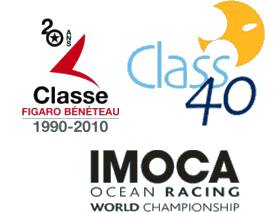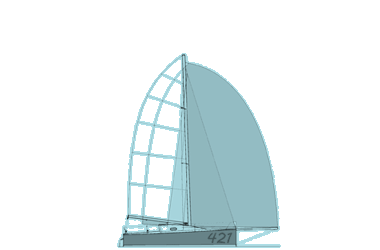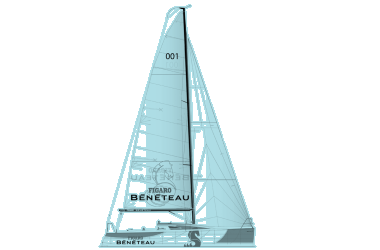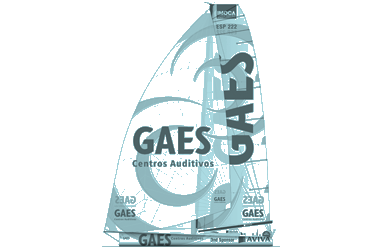edition #06
Offshore Sailing Classes
As with many sports, the different levels, classes or categories can be a little confusing to the uninitiated and whilst there are many types of competitive sailing – this month we have put together a short guide to the offshore classes, starting with the small but perfectly formed Mini Class right up to the round the world speed machines that are Open 60's.

Mini 6.50
In the mini class there are two types of boats racing:
Protos – these are prototypes and everyone can be different so long as they fit the rules. This is a great place for designers to try out new ideas. You will always see great innovation that can sometimes be transferred to the larger racing yachts.
Series – this is a production class which aims to make sailing the mini class yachts less expensive. They have to be professionally built in one yard and the hull, deck and mast are the same for all the boats, however, variations for the deck layout and hardware are acceptable.
General Specifications |
 |
|
Length |
6.5m |
|
Beam |
3m |
|
Draft |
1.6m |
|
Displacement |
975kg |
|
Ballast |
430kg |
|
Mainsail |
25m2 |
|
Genoa |
18m2 |
|
Spinnaker |
70m2 |
|
It takes just six steps to walk from stem to stern. The mast is almost twice as long and the beam is just three paces. The big race in the Mini Class is the Mini Transat, which is a sprint across the Atlantic Ocean. The race, which leaves from France, is about 4000 miles long taking in a stopover in the Canaries and then onto a final destination of either the Caribbean or Brazil. It is the little sister of the bigger ocean races, with the same or even more adventure and dangers!!! The Mini Transat could be described as the equivalent of carting to Formula 1 racing. One of the rules is that the only communication is by VHF. Weather forecasts are rare and lack detail. You really are alone with an SSB radio and limited communications and it is the purist form of solo sailing.
Englishman, Bob Salmon, first organized the race in 1977 as a reaction to races like the OSTAR where bigger and more expensive boats made it hard for people with less money to compete. The calendar for the class now combines single and double handed races in both coastal and offshore waters.
For more information log onto: www.classemini.com
Figaro
All on the same ground, using an identical boat - that is the battle cry of the Figaro Class. In these races, it really is the sailor that makes all the difference.
General Specifications |
 |
|
Length Overall |
10.10m |
|
Length Waterline |
9.82m |
|
Hull Beam |
3.4m |
|
Draft |
2.10m |
|
Light Displacement |
3,050kg |
|
Keel Weight |
1,100kg |
|
Mainsail |
36m2 |
|
The arrival of the Figaro Bénéteau 2 marked a new start for the class. This boat created by and for the solo sailor is very popular and every year they fight for the best places in tough competitive events. Single, double handed or fully crewed, all choices are allowed. Offshore or inshore racing, there are possibilities to match every taste, catering for professional skippers who want to prove themselves in the French Championship of Solo Offshore Racing or amateurs who wish to face the challenge of a Solitaire Afflelou Le Figaro or an oceanic race. A full and dynamic circuit improved by a range of attractive and complementary events.
The Figaro Bénéteau 2 is a one-design offshore cruiser racer yacht, with closed class rules. This means that the boat as supplied by the builder cannot be modified except where this is clearly mentioned and described in the rules. The aim of the rules is to ensure that the boats are as similar as possible in respect of construction, shape of hull and appendages, weight, distribution of weight, rig, sail plan, hardware and equipment. Sailing on one-design boats favours the equality of chances among the skippers and therefore it is the talent of the skipper and his preparation of the boat that give the competitive edge. It also sets reasonable limits to budgets.
Each boat is controlled at the start of every event by an official measurer of the class, certified by the Fédération Française de Voile. Many points are checked on the hull and the rigging as well as security points. Finally indoor equipment (stove, etc.) or outdoor equipment (liferaft, etc.) are sealed with lead in order to prevent them from being moved during the boat changes of direction.
Each boat has a race number, which enables the spectator to identify it easily. The Classe Figaro Bénéteau attributes the numbers from 1 to 10 to the first ten contestants of the previous year's French Championship of Solo Offshore Racing. Then from No.11 onwards, each boat is identified by its hull number given according to the date it was first been put afloat.
For more information log onto: www.classefigarobeneteau.com, transat.ag2rlamondiale.fr, www.lasolitaire.com
Class 40
The Class 40 sits between the Mini 6.50 and the Open 60 classes. The original aim was to provide fast but affordable 40 footers, limiting exotic materials, banning canting keels and restricting water ballast. Carbon fibre is banned in the hull and all but two of the maximum of eight sails must be made from woven polyester. However, with 115m2 of upwind sail area and 170m2 of asymmetric spinnaker flown from the bowsprit, these boats are fast. Class 40 has grown at an incredible pace. There are now 90 boats registered, in 18 different countries. It is one of the biggest offshore classes in the world and, as a result, is attracting a fair amount of attention. The Class 40 mandate is to provide a programme of solo, double-handed and crewed races, mainly offshore and long-distance (and preferably to beautiful destinations!).
They have an extensive calendar each year for events covering Europe and America. They also have a Round the World event in the Global Ocean Race.
For more information log onto: www.class40.com, www.globaloceanrace.com
Class 60
IMOCA stands for International Monohull Open Class Association. It is the governing body responsible for the technical rules and regulations of IMOCA Open 60 (ft) yachts that take part in well-known races such as the Vendée Globe, the Route du Rhum, the Transat Jacques Vabre and the Artemis Transat to name a few. IMOCA was established in 1991 and has been recognised as an International ISAF Class since 1998, with safety remaining the main priority of the class.
General Specifications |
 |
|
Length Overall |
20.1m |
|
Length Waterline |
18.28m |
|
Beam |
5.57m |
|
Draft |
4.5m |
|
Displacement |
8-9 tonnes |
|
Mast Height |
27m2 |
|
Sail Area Upwind |
300m2 |
|
Sail Area Downwind |
580m2 |
|
IMOCA not only manages the evolution of the technical rules but also defines the boats' IMOCA International Ocean Racing World Championship with point-scoring races. It is because of its wide-spread calendar with races taking place from France, the UK, Spain and the US, that attracts skippers from all around the world.
For more information log onto: www.imoca.org, www.barcelonaworldrace.org, www.routedurhum-labanquepostale.com
did you know? archive
- edition #01 - A Great Sailing Read…
- edition #02 - Sailing Records
- edition #03 - Cordon Rouge Club
- edition #04 - Charitable Causes
- edition #05 - IMOCA Open 60
- edition #06 - Offshore Sailing Classes
- edition #07 - Points of Sail
- edition #08 - Sailing Dictionary
- edition #09 - Toe in the Water
- edition #10 - PSP Southampton Boat Show



